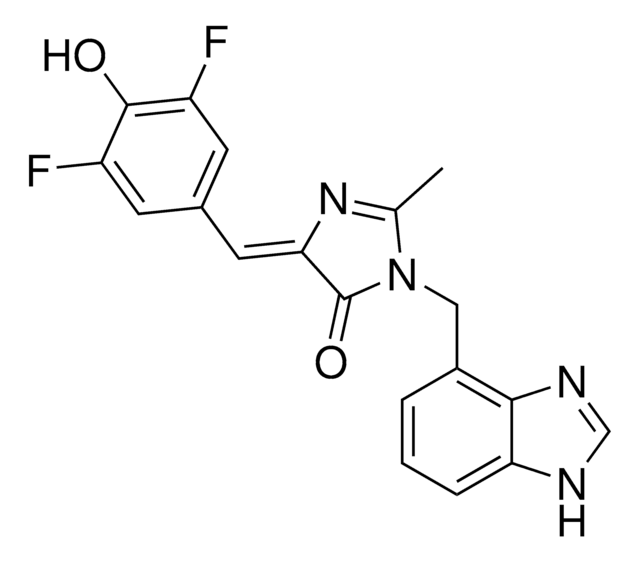SRP0192
PARP1 Active human
recombinant, expressed in baculovirus infected insect cells, ≥80% (SDS-PAGE)
Sinónimos:
ADPRT, NAD(+) ADP-ribosyltransferase 1, Poly (ADP-ribose) Polymerase 1
About This Item
Productos recomendados
origen biológico
human
recombinante
expressed in baculovirus infected insect cells
Análisis
≥80% (SDS-PAGE)
formulario
aqueous solution
mol peso
140 kDa
envase
pkg of 10 and 20 μg
fabricante / nombre comercial
Sigma-Aldrich
condiciones de almacenamiento
avoid repeated freeze/thaw cycles
concentración
>0.02 mg/mL
técnicas
inhibition assay: suitable
Nº de acceso NCBI
Nº de acceso UniProt
aplicaciones
life science and biopharma
Condiciones de envío
dry ice
temp. de almacenamiento
−70°C
Información sobre el gen
human ... PARP1(142)
Descripción general
Human PARP1 (GenBank Accession No. NM_001618), full length with N-terminal GST tag, MW = 140 kDa, expressed in a Baculovirus infected Sf9 cell expression system. Poly [ADP-ribose] polymerase 1 (PARP1) belongs to the DNA-dependent nuclear enzyme superfamily. Its structure includes an N-terminal with three zinc finger DNA-binding domains, an auto-modification domain with BRCT motif and a WGR domain having conserved tryptophan, glycine, and arginine residues, and a C-terminal catalytic domain with PARP signature sequence.
Aplicación
Acciones bioquímicas o fisiológicas
Definición de unidad
Forma física
Nota de preparación
Código de clase de almacenamiento
10 - Combustible liquids
Clase de riesgo para el agua (WGK)
WGK 1
Punto de inflamabilidad (°F)
Not applicable
Punto de inflamabilidad (°C)
Not applicable
Certificados de análisis (COA)
Busque Certificados de análisis (COA) introduciendo el número de lote del producto. Los números de lote se encuentran en la etiqueta del producto después de las palabras «Lot» o «Batch»
¿Ya tiene este producto?
Encuentre la documentación para los productos que ha comprado recientemente en la Biblioteca de documentos.
Nuestro equipo de científicos tiene experiencia en todas las áreas de investigación: Ciencias de la vida, Ciencia de los materiales, Síntesis química, Cromatografía, Analítica y muchas otras.
Póngase en contacto con el Servicio técnico






